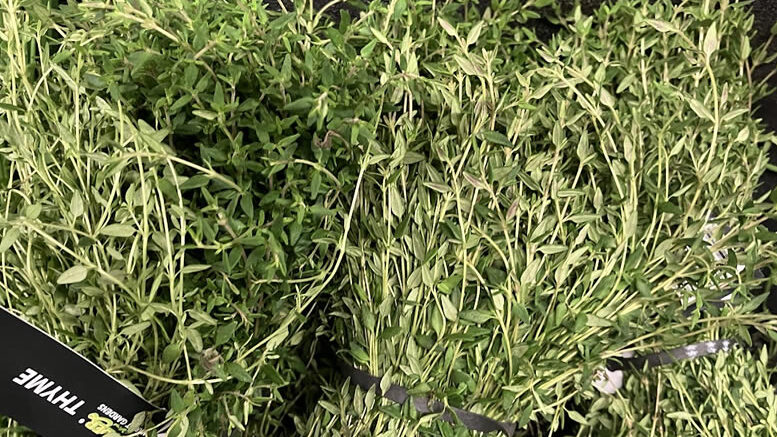Thyme, a pungent herb of the mint family, is closely related to basil, oregano, and marjoram.
Thyme’s dried leaves and flowering tops flavor a wide range of dishes, making it versatile and suitable for almost any culinary creation. It enhances the taste of eggs, stews, soups, meats, and stuffings.
This small, low-growing shrub with curled leaves originates from southern Europe, the Mediterranean region, Asia Minor, and Central Asia. It is also cultivated in North America. Dried thyme leaves have a greenish-brown color and emit a fragrant odor when crushed. The taste is warm and pungent, adding depth to various cuisines.
In Asian cuisine, thyme may not be as prevalent as in Western cooking, but its unique flavor profile is still appreciated in some dishes. Particularly in fusion cuisine or dishes influenced by Western culinary traditions, thyme can be used to add an aromatic and savory element. Its versatility makes it adaptable to different flavor profiles, contributing to the complexity of Asian-inspired recipes.
Thyme pairs surprisingly well with several Asian dishes and ingredients, adding a unique twist to traditional flavours. In Thai cuisine, thyme can complement the earthy and aromatic notes of dishes like Thai chicken curry, enhancing the flavour profile without overpowering the traditional spices. In Chinese cooking, thyme can be used in marinades for meats or in soups, providing a subtle depth of flavour that works well with soy sauce, ginger, and garlic. Thyme also pairs nicely with Asian ingredients such as lemongrass, sesame oil, and coconut milk, adding a Mediterranean touch to the rich, complex flavours of Asian cuisine. Its versatility makes it a valuable herb for experimenting with fusion dishes and innovative culinary creations.
Storage and Use
When purchasing thyme, you can choose between fresh and dried forms. Fresh thyme, typically sold in small bundles, should have vibrant green leaves and a strong, fragrant aroma, indicating its freshness and potency. Dried thyme, found in the spice section of supermarkets, offers the convenience of a longer shelf life and easy storage. Fresh thyme provides a more robust flavour and aromatic intensity, enhancing dishes with its bright, herbal notes. However, it requires refrigeration and has a shorter shelf life. Dried thyme, while slightly milder, is a convenient alternative that can be stored in a cool, dark place for months. Both forms of thyme are versatile and valuable in various culinary applications, but fresh thyme is preferred for dishes where its flavour can shine, while dried thyme is ideal for slow-cooked recipes and spice blends.

